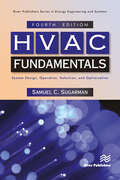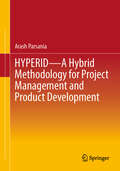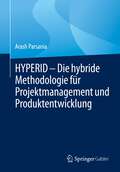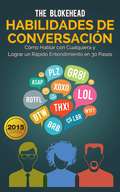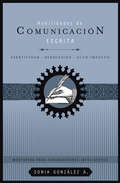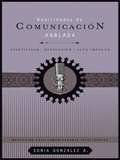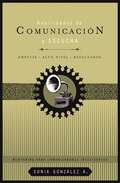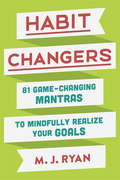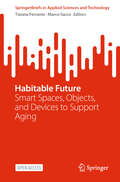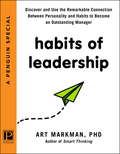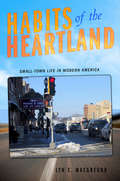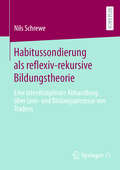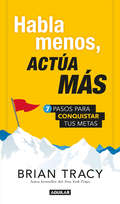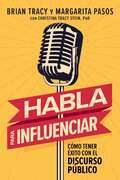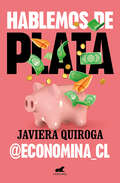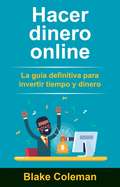- Table View
- List View
HTC Corp. in 2012
by David B. Yoffie Renee Kim Juan AlcacerAfter 15 years of remarkable achievements, Taiwan-based HTC Corp. faced difficult times by 2012. CEO Peter Chou, who drove HTC's transformation from an unknown manufacturer of PDAs for other companies to a well-known global player in smartphones, faced an uncertain and complex environment. Apple's lead in the smartphone and tablet markets, the acquisition of Motorola by Google, the Microsoft-Nokia alliance, the rise of Samsung, and the extensive patent wars - each raised questions about how HTC could continue its upward trajectory. In a rapidly evolving and increasingly competitive market, what would a sustainable differentiation strategy look like for HTC? How could HTC, a historically innovative company, compete in the tablet market? And how could it weather - and mitigate - the patent wars?
HTC and Virtual Reality
by David B. Yoffie Allison M. Ciechanover Andy WuIn fall 2017, HTC CEO and Chairperson Cher Wang was driving the company to focus on virtual reality (VR). HTC's first VR product, VIVE, released in spring 2016, was applauded for its superior immersive room-scale capabilities. However, early adoption of VR beyond gamers and technology enthusiasts was off to a slower start in general due to high cost, lack of quality content, and some user discomfort while using the technology. Wang endeavors to be the leading VR company, though competition from Sony, Facebook, and other technology leaders is mounting, and several, like HTC, are already pursuing second generation tetherless VR technology. As Wang seeks to develop the ecosystem by partnering with developers, creating a content platform, investing in VR startups, and launching VR arcades, she must decide the appropriate balance of fostering innovation in hardware, software and services, or both.
HUGE and Digital Strategy
by Ramon Casadesus-Masanell Nicholas G. KarvounisIn 2011, HUGE, Inc. is the fastest growing digital agency in the U.S. Its CEO, Aaron Shapiro, is considering a set of novel growth strategies to take his firm to the next level. However, the digital strategy industry in which HUGE has made a name for itself is highly fluid and constantly evolving-the options facing Shapiro and HUGE must be considered in light of an industry structure that blurs the lines across competitors, complements, and clients and could easily shift for or against digital agencies such as HUGE in the near future. Using HUGE as a focal point, students are asked to evaluate competitive dynamics in the digital strategy industry and predict the evolution of the market. They are also asked to use the unique dynamics of the digital strategy industry as a backdrop for assessing HUGE's best growth option going forward.
HVAC
by Eugene SilbersteinRESIDENTIAL CONSTRUCTION ACADEMY: HVAC 2nd edition delivers training materials with a hands-on practical approach. Based on NAHB/HBI Skill Standards developed by an advisory board of leading builders and educators, this full color, comprehensive text is intended for aspiring technicians and covers the installation, startup and service of residential air conditioning and heating systems. This new edition continues to present material as a theory then explains with how-to instructions while at the same time adhering to the NAHB/Home Builders Institute's Skills Standards for HVAC. Instructions contain step by step procedures with illustrations side by side with the description, giving clarity to the instructions. The first section explores matter, energy, heat and the basics of refrigeration with a view towards building a working knowledge of the behavior of heat and how it is transferred. Next, the start up and service section illustrates the steps that must be followed to make certain that airflow through the system is correct and the amount of refrigerant in the system is within the acceptable range. Finally the installation and service of oil, gas, electric and geothermal heating systems is covered as well as boilers, hydronic heating and radiant heating.
HVAC Fundamentals: System Design, Operation, Selection, and Optimization (River Publishers Series in Energy Engineering and Systems)
by Samuel C. SugarmanHVAC Fundamentals, System Design, Operation, Selection, and Optimization fully covers the full range of HVAC systems used in today’s facilities and how they operate. HVAC systems are divided into components and controls for air, water, heating, ventilating and air conditioning to illustrate how each system, subsystem, control, or component contributes to providing the desired indoor environment. The reader will learn why one component or system may be chosen over another with respect to design, application, energy conservation, indoor air quality, and cost.This book also covers heat flow fundamentals and calculations used in selecting equipment and determining system operating performance and cost. Fluid flow fundamentals and equations and fundamentals of system testing, and verification of system performance are also covered in this book. This gives the reader a complete picture of systems from concept to operation. The chapters are organized in a way that one builds upon another, and systems, components, design, and application are revisited as the reader gains knowledge and insight about the workings of HVAC and heat pump systems.This new edition has been revised and expanded with new drawings to give the reader a complete picture of HVAC and heat pump systems. Along with the Tables chapter for reference, the HVAC Math chapter has equations and example problems for many systems and components operation, energy, and cost calculations.
HYPERID - A Hybrid Methodology for Project Management and Product Development
by Arash ParsaniaThis book describes a new methodology for planning and delivering projects and products. HYPERID (Hyper Inter-Methodological Delivery) is suitable for any type of project - from developing AI-powered software to building a skyscraper - regardless of whether those projects have typically been delivered using agile or sequential methods to date. HYPERID is particularly suitable for "fixed time/fixed price" projects and can address the core project delivery needs of today's enterprises that primarily revolve around predictability and successful delivery in terms of cost, time, and added value while remaining agile.HYPERID, as a hybrid methodology, makes use of some existing approaches and complements them with additional processes, structures, best practices, and behaviors. The methodology was developed because previous process models - classic (such as the waterfall method) and agile (including Scrum) cannot meet some of today’s key requirements. HYPERID can be used to address the following core needs: reliable predictability and rapid planning, iterative and value-added results, and on-time and on-budget execution. The book is structured in such a way that the reader can learn all the necessary skills for planning and implementation according to the HYPERID methodology. The explanation of the individual steps is supplemented by background information, examples, and both best and bad practices. HYPERID is aimed at project managers and product managers, as well as executives who want to improve the implementation of their projects or products. On the HYPERID website you will find further information, updates, and tools for practical implementation.
HYPERID – Die hybride Methodologie für Projektmanagement und Produktentwicklung
by Arash ParsaniaDieses Fachbuch beschreibt eine neue Methodologie für die Planung und Umsetzung von Projekten und Produkten HYPERID, abgekürzt von „Hyper Inter-Methodological Delivery“, ist so konzipiert, dass es für jeden Projekt-Typ – von der Entwicklung KI-gestützter Software bis hin zum Bau eines Hochhauses – geeignet ist, ganz gleich, ob diese Projekte bisher typischerweise agil oder sequenziell durchgeführt wurden. Insbesondere ist HYPERID auch für „Fixed Time/Fixed Price“-Projekte geeignet und ist somit in der Lage, Kernbedürfnissen heutiger Unternehmen in Bezug auf die Lieferung von Projekten Rechnung zu tragen, die sich primär um die Vorhersehbarkeit und erfolgreiche Lieferung in Bezug auf Kosten, Zeit und Mehrwerten bei gleichzeitiger Agilität drehen.HYPERID bedient sich als hybrides Vorgehensmodell einigen bestehenden Ansätzen und ergänzt diese um weitere Prozesse, Strukturen, Best Practices und Verhaltensweisen. Die Methodologie wurde entwickelt, da bisherige Vorgehensmodelle – klassische (wie Wasserfall-Methode) und agile (wie Scrum) – einigen Anforderungen nicht gerecht werden können. Mit Hilfe von HYPERID können folgende Kernbedürfnisse abgedeckt werden: verlässliche Vorhersehbarkeit und schnelle Planung, iterative und mehrwertgetriebene Ergebnisse sowie eine zeit- und budgetgerechte Umsetzung. Das Buch ist so strukturiert, dass dem Leser alle notwendigen Fähigkeiten zur Planung und Umsetzung nach HYPERID aufeinander aufbauend vermittelt werden. Die Erläuterung der einzelnen Schritte wird ergänzt durch Hintergrund-Informationen, Beispiele, Best und Bad Practices. HYPERID richtet sich an Projektleiter und Product Manager, aber auch Führungskräfte, welche die Umsetzung ihrer Projekte oder Produkte verbessern möchten. Auf der Webpräsenz von HYPERID finden Sie weitere Informationen, Aktualisierungen und Tools zur praktischen Umsetzung.
Habilidades de Conversación. Cómo Hablar con Cualquiera y Lograr un Rápido Entendimiento en 30 Pasos
by The BlokeheadEste libro contiene información sobre cómo puedes desarrollar tus habilidades de conversación para llegar a un entendimiento y hablar con gente en cada esfera en tu vida. Este libro tiene como objetivo ayudar a los que tienen problemas para entablar conversaciones exitosas con diferentes tipos de personas. También contiene 30 consejos sobre cómo puedes llegar a un entendimiento casi con quien sea. ¡Compra este libro ahora!
Habilidades de comunicación escrita
by Sonia GonzalezEscribir para ser leído.Para un liderazgo más asertivo y de alto impacto, hay que empoderara los profesionales en la competencia de la comunicación. Empoderar alfuncionario en la asertividad de su comunicación lleva a la empresa a un mayornivel de impacto en la rentabilidad de su negocio. Durante quince años comoconsultora de empresas del sector financiero y de multinacionales, Sonia Gonzálezha desarrollado una metodología muy práctica para lograr la claridad, fluidez yconcreción de la forma de comunicarse de los profesionales.Estelibro, número uno de la serie Comunicación inteligente, ofrececlaves prácticas para eliminar los bloqueadores comunes de la expresión escrita,tales como claves para ordenar las ideas; profundización para una transmisiónde ideas más asertiva y persuasiva; puntuación como clave de oro para alcanzarritmo y armonía de los textos; y casos concretos para apreciar el efecto sorprendente"antes y después" de los textos.
Habilidades de comunicación hablada
by Sonia GonzalezVale más saber poco pero decirlo bien, que sabermucho y no tener idea de comunicarlo.Para un liderazgo más asertivo y de alto impacto, hay queempoderar a los profesionales en la competencia de la comunicación. Empoderaral funcionario en la asertividad de su comunicación lleva a la empresa a unmayor nivel de impacto en la rentabilidad de su negocio. Durante quince añoscomo consultora de empresas del sector financiero y de multinacionales, SoniaGonzález ha desarrollado una metodología muy práctica para lograr la claridad,fluidez y concreción de la forma de comunicarse de los profesionales.Estelibro, número dos de la serie Comunicacióninteligente, ofrece unametodología práctica, de comprobados resultados, que permite corregir las debilidadescomunes de los líderes en sus presentaciones. Con claves sencillas y aplicables,se efectuará un cambio extremo a la comunicación hablada, tanto en el fondo dequé se dice como en la forma de cómo se lo dice.
Habilidades de comunicación y escucha: Empatía + alto nivel + resultados
by Sonia GonzalezHablar para ser escuchado.Para un liderazgo más asertivo y de alto impacto, hay que empoderar a los profesionales en la competencia de la comunicación. Empoderar al funcionario en la asertividad de su comunicación lleva a la empresa a un mayor nivel de impacto en la rentabilidad de su negocio. Durante quince años como consultora de empresas del sector financiero y de multinacionales, Sonia González ha desarrollado una metodología muy práctica para lograr la claridad, fluidez y concreción de la forma de comunicarse de los profesionales.Este libro, número tres de la serie Comunicación inteligente, expone la virtud superior de la gente inteligente, el escuchar. El escuchar es la capacidad de atender en forma dinámica, de desarrollar el "músculo" de guardar silencio o callar los pensamientos, para atender y entender al otro. Es mucho más que apenas oírlo, es poder escuchar no sólo lo que dice, sino lo que no dice pero lo transmite con el metalenguaje de sus actitudes, expresiones y gestos.
Habit Changers: 81 Game-Changing Mantras to Mindfully Realize Your Goals
by M. J. RyanWhat would you like to change in your life? Be more focused at work? Communicate more effectively? Find work-life balance? Make smarter decisions? Be more patient with your team or family? Have greater self-confidence? Less stress? Just . . . be happier? Often, the biggest obstacle to change lies in our most deeply ingrained habits: those automatic thought processes that operate outside our consciousness, and yet have a profound impact on our behavior, shaping everything from how we respond to challenges to how we engage with others. The good news is that we can literally rewire our mental habits for the better. In Habit Changers, executive coach M.J. Ryan shares the secret weapon that has helped her highest performing clients improve their focus, better manage under pressure, enhance their emotional intelligence, become more effective leaders, and more. Inspired by the Buddhist tradition of Lojong, or "slogan practice," habit changers are simple, one-line aphorisms that, when recited, reprogram your brain's automatic responses. Here, Ryan explains how to use the 81 Habit Changers that have demonstrated the most profound and lasting results. They include: § You can't say yes if you can't say no § Don't push buttons that don't need to be § Handshake your fear § Stand where you'd rather not § Remember your highest intention § Outsource your worry § Reach for the better thought Our capacity to change is our greatest gift as human beings. Habit Changers will help you take control of your destiny and more easily achieve the success and happiness you desire.
Habitable Future: Smart Spaces, Objects, and Devices to Support Aging (SpringerBriefs in Applied Sciences and Technology)
by Marco Sacco Tiziana FerranteThis open-access book presents a multidisciplinary approach to the design of living spaces from an age-friendly perspective, in line with the Ambient Assisted Living (AAL) paradigm, which promotes the integration of assistive devices and technologies to create safe, comfortable environments that meet the needs of older adults and their caregivers. It outlines new operational strategies, incorporating an analysis of technological development trends focused on the well-being and health of older adults, identifying their needs and expectations through participatory processes, and establishing design requirements to foster the acceptance of interfaces and emerging devices. In light of the exponential increase in smart applications within living environments, the book emphasizes the necessity to introduce cutting-edge solutions for data transmission and processing, as well as the development of semantically driven tools to support designers in selecting and integrating assistive technologies through virtual environment simulations. The book also illustrates the methodological processes adopted in defining guidelines for the design of spaces dedicated to older adults, with attention to architectural and functional aspects in various domains: perceptual and sensory factors for the design of waiting areas in Community Houses, technological and environmental requirements for the integration of devices in home adaptation projects for Home Care and locational and typological criteria for the development of new Social Day Care Centers. These contributions are based on the experiences shared during the conference organized by the WP1 "Human-Centred Design and Evaluation, Certifications, Sustainability within the Built Environment" of Spoke9, within the framework of the Age-It/NRRP program.
Habitat for Humanity International
by Gary W. Loveman Andrew SlavittHabitat for Humanity, a not-for-profit, volunteer-based home builder, is coping with years of rapid growth and success. They now face a series of options to continue their successful course and must make corresponding organizational adjustments. Teaching objectives involve applying lessons learned in the Service Management course to this unique organization: specifically, can they think of themselves as a customer-focused organization and maintain their mission and culture, what are their best options for strategic growth, and how do they mobilize human resources and a headquarters organization at a grassroots nonprofit?
Habitat for Humanity International: Brand Valuation
by John A. Quelch Nathalie LaidlerHabitat for Humanity underwent a brand valuation study and found that its brand was worth $1.8 billion, equivalent to Starbucks. Senior management reviews the issues facing the organization; students are afforded insights into what drives brand value for a major nonprofit and what is critical for building and protecting brand value.
Habits of Leadership
by Art MarkmanIn his internationally acclaimed book, Smart Thinking, which examines the gap between innate intelligence and acquired mental skills, Art Markman presented a three-part formula to show readers how to develop "smart habits", how to acquire high quality knowledge, and how to use that knowledge when it's needed. Now, Markman takes his scientifically-based formula one step further to demonstrate the correlation between personality and habits, and the impact of personality and habits on leadership potential and innovation success. Habits of Leadership explores the "Big 5" personality characteristics -- Extroversion, Agreeableness, Conscientiousness, Openness, and Emotional Stability -- as well as other key variables such as person's ability to acquire and use knowledge or the level of one's tolerance to risk. Using a unique personality profiler, readers are able to determine their strengths and weaknesses and then apply this understanding to develop smart habits. Great leaders have key traits that influence their success. People who are Extroverts can serve as effective advocates for ideas. Those who are low in Agreeableness are willing to tell people things that they do not want to hear, and so facilitate open and honest lines of communication. People high in Conscientiousness get things done. They ensure that a project once started is completed.. Those who are high in Openness and are able to acquire and use knowledge through reasoning, intuition, or perception tend to be good change-makers. Their breadth of knowledge allows them to communicate ideas from a wide variety of sources to innovate and solve problems. And leaders possessed of emotional stability have the clear-mindedness and confidence to navigate through any storm. Individuals who demonstrate these traits and who have developed habits that serve them well, are extraordinary. Yet the potential for greatness is within everyone. Habits of Leadership will show anyone how to develop and use these exceptional gifts.
Habits of the Heartland: Small-Town Life in Modern America
by Lyn C. Macgregor"So, how do Americans in a small town make community today? This book argues that there is more than one answer, and that despite the continued importance of small-town stuff traditionally associated with face-to-face communities, it makes no sense to think that contemporary technological, economic, and cultural shifts have had no impact on the ways Americans practice community life. Instead, I found that different Viroquans took different approaches to making community that reflected different confluences of moral logics--their senses of obligation to themselves, to their families, to Viroqua, and to the world beyond it, and about the importance of exercising personal agency. The biggest surprise was that these ideas about obligation and agency, and specifically about the degree to which it was necessary or good to try to bring one's life into precise conformance with a set of larger goals, turned out to have replaced more traditional markers of social belonging like occupation and ethnicity, in separating Viroquans into social groups. "--from Habits of the Heartland Although most Americans no longer live in small towns, images of small-town life, and particularly of the mutual support and neighborliness to be found in such places, remain powerful in our culture. In Habits of the Heartland, Lyn C. Macgregor investigates how the residents of Viroqua, Wisconsin, population 4,355, create a small-town community together. Macgregor lived in Viroqua for nearly two years. During that time she gathered data in public places, attended meetings, volunteered for civic organizations, talked to residents in their workplaces and homes, and worked as a bartender at the local American Legion post. Viroqua has all the outward hallmarks of the idealized American town; the kind of place where local merchants still occupy the shops on Main Street and everyone knows everyone else. On closer examination, one finds that the town contains three largely separate social groups: Alternatives, Main Streeters, and Regulars. These categories are not based on race or ethnic origins. Rather, social distinctions in Viroqua are based ultimately on residents' ideas about what a community is and why it matters. These ideas both reflect and shape their choices as consumers, whether at the grocery store, as parents of school-age children, or in the voting booth. Living with--and listening to--the town's residents taught Macgregor that while traditional ideas about "community," especially as it was connected with living in a small town, still provided an important organizing logic for peoples' lives, there were a variety of ways to understand and create community.
Habitussondierung als reflexiv-rekursive Bildungstheorie: Eine interdisziplinäre Abhandlung über Lern- und Bildungsprozesse von Tradern
by Nils SchreweDie Frage, auf welche Art und Weise sich an der Börse Geld verdienen lässt, gilt bisweilen vor allem als ein viel diskutiertes Thema innerhalb der ökonomischen Disziplin. Dies führt allerdings bisweilen dazu, dass viele Aspekte menschlicher Handlungsvollzüge entlang der Subjektfigur des Homo Oeconomicus ausgeblendet werden. Innerhalb dieser Studie wird daher in Folge einer wissenschaftstheoretischen Erörterung finanz- und erziehungswissenschaftlicher Paradigmata dafür plädiert, das Thema Finanzspekulation aus einer bildungsbiografischen Perspektive zu beleuchten. Auf der Grundlage von 10 biografischen Interviews mit eigenverantwortlich handelnden Tradern liegt somit erstens erstmals eine wissenssoziologische Studie zu der Frage, welchen habituellen Lern- und Bildungsprozessen Menschen beim Trading unterliegen, vor. Zweitens wird innerhalb derselben ein phasenhafter Verlauf biographischer Bildungsprozesse im Kontext eines Engagements an der Börse erstellt und drittens anhand eines Wechselverhältnisses von Theorie und Empirie eine reflexiv-rekursive Bildungstheorie der Habitussondierung entworfen.
Habla menos, actúa más: 7 pasos para conquistar tus metas
by Brian TracyEl experto en éxito y autor bestseller de The New York Times, Brian Tracy, comparte un método probado de siete pasos que te ayudarán a conseguir, en pocos meses, más de lo que la mayoría de las personas logra en toda su vida.Si te pones como meta lograr dos cosas todos los días -sin excepción-, no tendrás límites para lo que quieras alcanzar. Con la ayuda de Brian, serás capaz de descubrir la clave para ganar, tener felicidad, crear una buena reputación y triunfar. El experto en éxito, Brian Tracy, comparte un método probado de siete pasos:1. Elimina los hábitos negativos.2. Toma el control de tu vida.3. Atrévete a ir hacia adelante.4. Decide qué es lo que realmente quieres.5. Supera la procrastinación.6. Conviértete en un aprendiz de por vida.7. Nunca te rindas.Habla menos, actúa más es la clave para conquistar tus objetivos y liberar tu potencial ilimitado para tu vida y tu negocio.
Habla para influenciar: Cómo tener éxito con el discurso público
by Brian Tracy Margarita PasosEste libro te brinda herramientas prácticas y comprobadas para hablar con poder y persuasión. Aprenderás a cautivar a cualquier audiencia, aumentar tu confianza y lograr una comunicación efectiva en cualquier escenario, desde reuniones hasta grandes presentaciones.La habilidad de hablar con confianza y realizar presentaciones impactantes puede acelerar tu carrera y ayudarte a alcanzar objetivos desafiantes. Lo que muchos no saben es que cualquiera puede aprender a ser un gran orador, de la misma forma en que se aprende a conducir un coche o montar en bicicleta.En Habla para influenciar, Brian Tracy revela los secretos probados que puedes usar para hablar con poder y persuasión, ya sea en reuniones informales o ante grandes audiencias. Esta obra ofrece técnicas clave para hablar con claridad y confianza, aprender a captar la atención y dejar una impresión duradera.Los lectores descubrirán cómo:Tener confianza, mantener una actitud positiva y relajarse frente a cualquier público.Utilizar el lenguaje corporal, la voz y los elementos visuales de manera efectiva.Emplear el humor, historias, citas y preguntas para conectar con la audiencia.Superar el escepticismo cuando se presentan nuevas ideas.Concluir con fuerza, dejando un mensaje persuasivo.Rebosante de estrategias prácticas, Tracy comparte sus secretos más poderosos para cautivar a las personas y ganar su confianza. Además, Margarita Pasos, autora y conferencista, complementa el contenido con resúmenes al final de cada capítulo, ofreciendo consejos útiles sobre cómo ha aplicado las enseñanzas del libro en su propio camino hacia el éxito.Christina Stein, experta en comunicación y relaciones, ofrece un breve resumen al principio de cada capítulo, proporcionando un valioso enfoque para superar bloqueos emocionales y fortalecer las relaciones interpersonales a través de la comunicación clara.Speak to Win The book gives you proven, practical tools to speak with power and persuasion. You&’ll learn how to captivate any audience, boost your confidence, and communicate effectively in any setting, from meetings to large presentations.The ability to speak with confidence and deliver winning presentations can accelerate your career and help you achieve even the most challenging goals. What many people don&’t know is that anyone can learn to be a great speaker, just as easily as they can learn to drive a car or ride a bike.In Speak to Win, Brian Tracy reveals time-tested strategies that anyone can use to speak powerfully and persuasively, whether in informal meetings or in front of large audiences. This book provides key techniques to speak with clarity and confidence, grab attention, and leave a lasting impression.Readers will discover how to:Build confidence, stay positive, and remain relaxed in front of any audience.Use body language, vocal techniques, and props effectively.Employ humor, stories, quotes, and questions skillfully to engage the audience.Overcome skepticism when presenting new ideas.Close with strength and persuasiveness.
Habla para que te escuchen: Descubre estrategias probadas para una comunicación eficaz en cualquier situación
by Cordell Henry¡Mejore sus habilidades sociales para una comunicación eficaz con sus compañeros y en los negocios hoy mismo! ¿Se siente incómodo en situaciones sociales en las que la primera impresión es vital? ¿Le falta confianza y carisma en sus comunicaciones diarias, lo que le hace parecer distante y poco atractivo? Si es así, es posible que le falten algunas habilidades sociales cruciales que son esenciales para su supervivencia y éxito en este mundo. Cuando se trata de habilidades sociales, no hay nada mejor que contar con un conjunto de estrategias que han demostrado que le preparan para el éxito. De hecho, de esta manera, podrá aprender y descubrir una gran cantidad de aspectos interesantes sobre otras personas que no tendría la oportunidad de conocer si fuera demasiado tímido para acercarse a ellos en primer lugar. En este libro aprenderá: Las razones más comunes por las que la gente sufre de ansiedad social Cómo determinar su motivación para volverse más sociable Por qué es tan importante tener habilidades sociales El avance en las relaciones Cómo hablar con cualquier persona Consejos probados para atraer, sostener y pasar por una entrevista o eonversación con facilidad Las 5 claves secretas para una gran comunicación y relación Por qué somos animales sociales y qué significa eso Nueve estrategias para ser un mejor jugador social Tácticas de comunicación imprescindibles para lograr mayores conexiones Cómo hacer un seguimiento de las conversaciones ***BONUS*** Cómo dominar el arte de la presentación El papel de la tecnología y cómo ha afectado negativamente a nuestras habilidades de comunicación Estrategias para convertirse en un comunicador eficaz Cómo trabajar las relaciones de forma eficaz Descubra cómo usted es la clave de su propio éxito Y mucho más..
Hablan los chinos. Historias reales para entender a la futura potencia del mundo: Historias Reales Para Entender A La Futura Potencia Del Mundo
by Ana FuentesUna obra coral resultado de una magnífica labor periodística que desentraña los misterios de un país desconocido aún hoy para Occidente. Un disidente torturado por la policía, un joven millonario nacionalista, un emigrante que cruza el país en busca de trabajo, un viejo maestro de kung-fu que ha dejado de entrenar por la contaminación, una campesina que se prostituye para pagar la educación de su hijo... ¿Quiénes son los chinos? La periodista Ana Fuentes, que ha sido corresponsal de la Cadena SER en Pekín, recoge en Hablan los chinos el testimonio en primera persona de ciudadanos que han decidido romper su silencio y hablar de la realidad de su país -su relación con la familia, con el poder, con el resto del mundo-. Historias reales de individuos de distinto nivel cultural y poder adquisitivo que impactan por lo insólito, que emocionan y que ponen fin a muchos clichés. Una obra coral resultado de una magnífica labor periodística que desentraña los misterios de un país desconocido aún hoy para Occidente. China ha crecido vertiginosamente en los últimos años hasta convertirse en la segunda economía mundial. En 2008 fue sede de los Juegos Olímpicos, su puesta de largo ante la comunidad internacional entre censura, represión de los activistas y unos niveles de corrupción desorbitados. Una China tan nueva como milenaria que trata de superar los traumas del colonialismo extranjero, las hambrunas del Gran salto hacia delante y las atrocidades de la Revolución Cultural. «Ganarme su confianza no fue fácil: algunos nunca habían dirigido la palabra antes a un extranjero. Tras meses intensos de charlas, paseos y alguna persecución policial acabaron hablándome abiertamente de sus metas y de sus frustraciones. Éste es el resultado». Ana Fuentes
Hablar de todo y no saber de nada: Las tertulias y la nueva política
by Joan LópezEl papel de la tertulia española en el mundo mediático y político: ¿fuente de información o intoxicación mediática? Las tertulias fueron en el pasado un género minoritario creado con la voluntad de ofrecer información complementaria acerca de los temas de actualidad. Sin embargo, el feroz mundo mediático del siglo XXI ha obligado a las tertulias a cambiar de formato hasta convertirlas en un espectáculo que se emite en horas de máxima audiencia. Al conquistar la parrilla televisiva, las tertulias han derivado en puro entretenimiento dónde la opinión y la confrontación ideológica parecen ser los ingredientes del éxito. ¿Quién determina la línea editorial de los programas?¿La tertulia es fuente de información o es intoxicación mediática?¿Existe el tertuliano libre?¿Cómo se llega a ser tertuliano?¿Cómo se preparan las tertulias?¿Qué pasa en las cadenas de televisión pública? En este fascinante ensayo, Joan López analiza el papel de la tertulia en nuestro país mediante una serie de capítulos divulgativos y polémicos que ponen en entredicho su contribución efectiva al debate público ya que parecen regirse más por el sesgo ideológico que marcan sus respectivas cadenas que por una voluntad honesta de análisis de la actualidad política y social.
Hablemos de plata
by Javiera QuirogaToma el control de tus finanzas personales de la mano de los consejos de Javiera Quiroga, periodista especializada en economía y creadora del IG @economina_cl ¿Cómo invertir tu plata, en bienes raíces o en fondos mutuos? ¿Cuándo debo comenzar a ahorrar para la vejez? ¿Cómo funciona un depósito a plazo? ¿Por qué debe importante el precio del dólar? ¿Qué es el Ipsa? ¿Qué es el mercado de capitales? ¿Cómo maximizar las ganancias sin arriesgarlo todo? Las respuestas a estas preguntas están en estas páginas, en las que se explican de manera simple, pero efectiva, los conceptos más importantes que debemos entender para invertir nuestro dinero, especialmente en tiempos de crisis.
Hacer dinero online: La guía definitiva para invertir tiempo y dinero
by Blake ColemanSi ya tienes un sitio web pero no está a la altura de tus expectativas, el marketing de asociados también puede ofrecerte toda una nueva gama de líneas de ingreso y ganancias para que tu negocio crezca y logres el tipo de libertad financiera que tanto has estado anhelando. Descarga esta guía, sigue los pasos y crea toda una gama de nuevas líneas de ingresos mediante el marketing de asociados. Tienen muchas posibilidades de hacer dinero online. Tómate el tiempo suficiente antes de obtener ganancias como explica el eBook. Sigue las instrucciones de manera correcta y el éxito será parte de ti. Básicamente, el eBook tiene muchas respuestas a preguntas sobre formas de hacer dinero online. Estás por descubrir una estrategia probada sobre cómo convertirte en una máquina de hacer dinero, incrementar tus ingresos sin conseguir otro empleo. Este libro se enfoca en las tácticas y técnicas que los millonarios usan para crear ingresos residuales, asegurar su futuro financiero ¡y prosperar en épocas de dificultades económicas! Consigue este libro hoy mismo.


